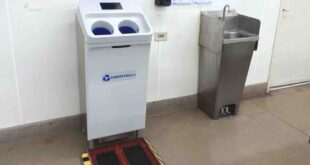ISO 50001 is way to improve energy use by developing an Energy Management System. Matthew Margetts outlines eight key metrics to claim ISO 50001 accreditation
Today’s organisations are realising the benefits of efficient energy management in addressing their impact, conserving resources and improving their bottom line. In response, the International Organisation for Standardisation has developed and published a new International Standard: the ISO 50001 standard for energy management systems, which is intended to safeguard our future by making a positive difference in the here and now.
ISO 50001 is the international Energy Management Systems (EnMS) standard designed to support organisations in all sectors. ISO 50001 provides a pragmatic way to improve energy use by developing an EnMS.
ISO 50001 is based on the management system model of continual improvement, making it easier for organisations to integrate energy management into their overall efforts to improve quality and environmental management.
It aims to enable organisations to take a systematic approach to reduce adverse impacts on the environment and achieve continual improvement of energy performance, efficiency and conservation
What requirements form part of the ISO 50001 framework? Develop a policy for more efficient use of energy; fix targets and objectives to meet the policy; use data to better understand and make decisions about energy use; measure the results; review how well the policy works; continually improve energy management.
So why get certified? An energy management system enables you to establish the systems and processes necessary to continually improve energy performance, which has become an increasingly important item on the business agenda. Certifying to an EnMS is an important step in achieving environmental performance as it demonstrates to stakeholders that your organisation is achieving true improvement in energy use and efficiency.
Here are eight key metrics that a business must check to claim ISO 50001 accreditation.
1. Context of the organisation. This is a short paragraph in your policy document that defines your business and its context. What do you do? How do you operate? What are the internal and external factors that affect your business operations? What is your culture and approach to decarbonisation?
2. Leadership. There is an explicit requirement for the leadership team at your company to commit to energy efficiency and claim accountability. This takes the form of a declaration of intent and should be signed by your highest leaders.
3. Strategic energy management. Your energy policy and associated objectives must be consistent with your business strategy. Here you will set out your company goals and expectations for your energy policy.
4. Risk and opportunities. Your policy needs to identify the risks and opportunities that may impact energy performance. This must also lay out any legal requirements that you have.
5. Energy performance improvement. This states the expected outcome from the energy policy and should be matched to outcomes.
6. Energy performance indicators. Established indicators are used to compare performance before EnMS and after. Variables must be taken into account to ‘normalise’.
7. Energy baseline. Point in time from where performance starts being recorded. An established baseline that performance is being judged against.
8. Performance evaluation. This is the interpretation of the results and the advice given.
Where to start? Get an energy-monitoring partner
There’s no doubt that ISO 50001 certification is beneficial to your organisation, but the progress of attaining and maintaining the standard can seem overwhelming. Using the services of an energy monitoring partner helps you develop the infrastructure, data, and documents needed for an audit and certification.
Implementing a smart energy monitoring system consisting of smart tags, sensors, network connectivity, and a digital twin of your data is vital in reaching compliance with the eight key metrics mentioned above. With real-time and historical energy consumption data at your fingertips, you will be able to understand where you’re currently falling short, measure the impact of the changes you make to achieve compliance, report on your activities and progress, and demonstrate your commitment to continuous improvement of energy performance.
Matthew Margetts is Director of Sales and Marketing at Smarter Technologies.
 Engineer News Network The ultimate online news and information resource for today’s engineer
Engineer News Network The ultimate online news and information resource for today’s engineer



